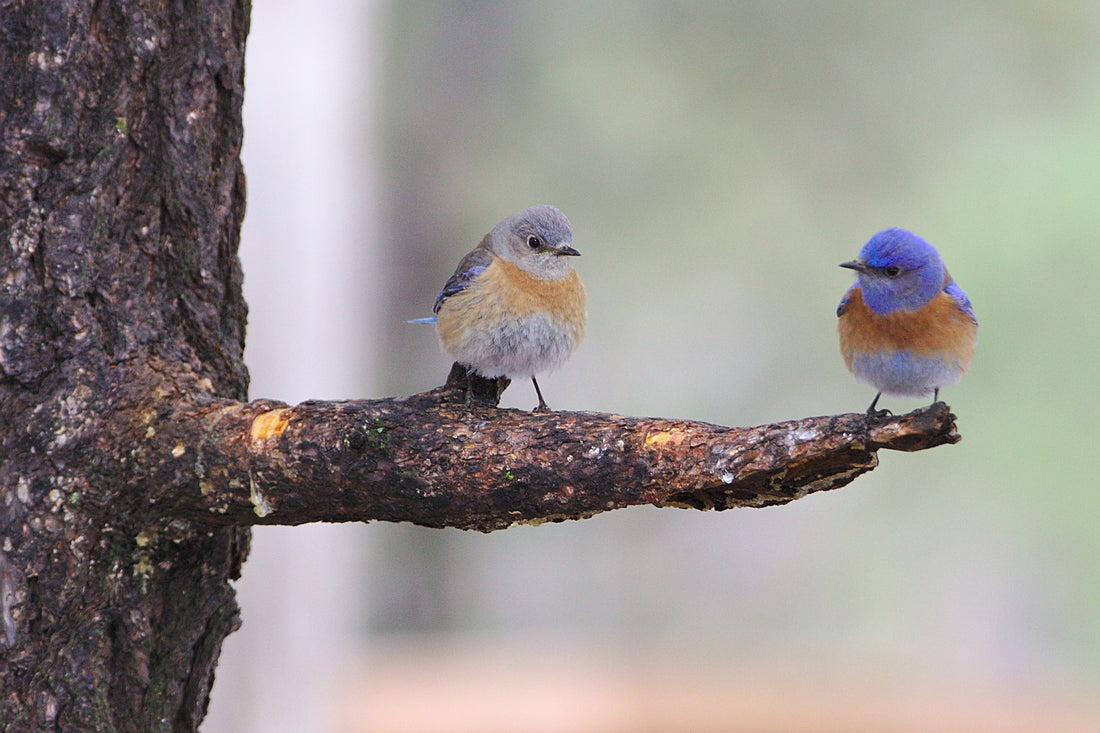The backyard garden is uplifted and vastly improved by the presence of songbirds, hummingbirds and butterflies. Who doesn't love seeing a bluebird, cardinal or a big, vibrant butterfly? Sadly, their populations are declining due to the loss of their natural habitat. We can make a difference, though, by improving our backyards and turning them into welcoming habitats.
To stay alive and reproduce, every living being requires four elements: food, water, shelter, and nourishment for their offspring. This is referred to as a habitat. If you want birds to make your backyard their home, it is essential to create a habitat they will love. This involves planting a combination of annuals, perennials, and native shrubs.
Several common perennials which birds favor are Anise Hyssop, Tickseed, Yarrow, Lavender, Coneflowers, Black-eyed Susan, Sunflowers, Joe Pye Weed, Goldenrod and Sedums. It is important to include a variety of flowers, as different birds prefer one over the other. Additionally, when the flowers finish blooming, you should not cut them off; instead, leave the seed heads standing so birds can enjoy them through the winter. Bird feeders can be beneficial as well, but the plants are necessary to create a sustainable habitat.
Insects make up the bulk of a songbird's and hummingbird's diet, comprising around 97% of their meals. These insects, such as spiders, mosquitoes, flies, crickets, beetles, and especially caterpillars, are the primary source of protein in the diets of their young and offer the nourishment necessary for quick and strong growth. In order to sustain themselves, adult bluebirds eat lots of insects. To catch these insects, they fly to a higher spot and scan the ground below for food before swooping down to catch it. This is why they opt to nest in open locations.
If insecticides are used habitually in your garden and yard, there is a low probability of birds visiting. Besides the unfortunate reality that insecticides can be toxic to birds, it also deprives them of their food supply. Consequently, they will look for other areas to build nests due to the lack of food for themselves and their offspring. The presence of native plants encourages the presence of helpful insects, which subsequently draws in various species of birds that help to control the insect population.
Native shrubs are a big food source for birds, who prefer them to non-native plants. The fruit these shrubs produce is what sustains the birds. Trees, shrubs, and ornamental grasses provide cover and safety for birds from their predators. They will sometimes consume sap from the trees, but more frequently they look for bugs in the crevices of the bark.
Songbirds require water, just like every other living creature. Not only do they need to have it to drink, but they also need to clean their feathers. They are especially drawn to water that is moving. To make a birdbath especially attractive to them, add a "water wriggler." In winter, the importance of providing water for the birds increases as the temperature drops. To prevent the birdbath from freezing over, you may need to use a heater.
Like other types of songbirds, hummingbirds feed their babies bugs. And they have another use for insects, spiders in particular. They incorporate spider silk into their small nests to allow for the nest to expand as the chicks grow. Hummingbirds have specific flowers they prefer. Their beak is elongated with an extended tongue, enabling them to reach the inside of long, narrow flowers. Canna Lilies, Honeysuckle, Salvias, Trumpet Vines, and Fuchsia are some of the blooms that they particularly enjoy.
Hummingbirds like drinking sugar water from feeders when flowers do not provide them with enough nourishment. To make the syrup, blend one cup of sugar with four cups of boiling water, and then allow it to cool before pouring it into the feeder. Avoid adding any dye to the water. Any leftover sugar water should be stored in the refrigerator, and the feeder fluid should be changed frequently in order to prevent it from going bad.
In order to get butterflies to stay in your garden, provide them with host plants that supply food for their caterpillars. Examples of such plants include oak, red maple, sassafras, willows, milkweed, plants from the carrot family (such as parsley, dill, and fennel), violets, and clover. These same plants also attract songbirds.
Just planting flowers will still draw in some butterflies, but for them to take up residence, host plants are necessary. Butterflies are attracted to blooms with generous, sturdy perches, such as Coneflower, Rudbeckia, Zinnia, Tithonia, Liatris, Garden Phlox, and Sedums.
With the growth of highways, cities, housing developments, and parking lots, the destruction of natural habitats increases, making our backyard gardens increasingly important. Create change; construct a habitat!



